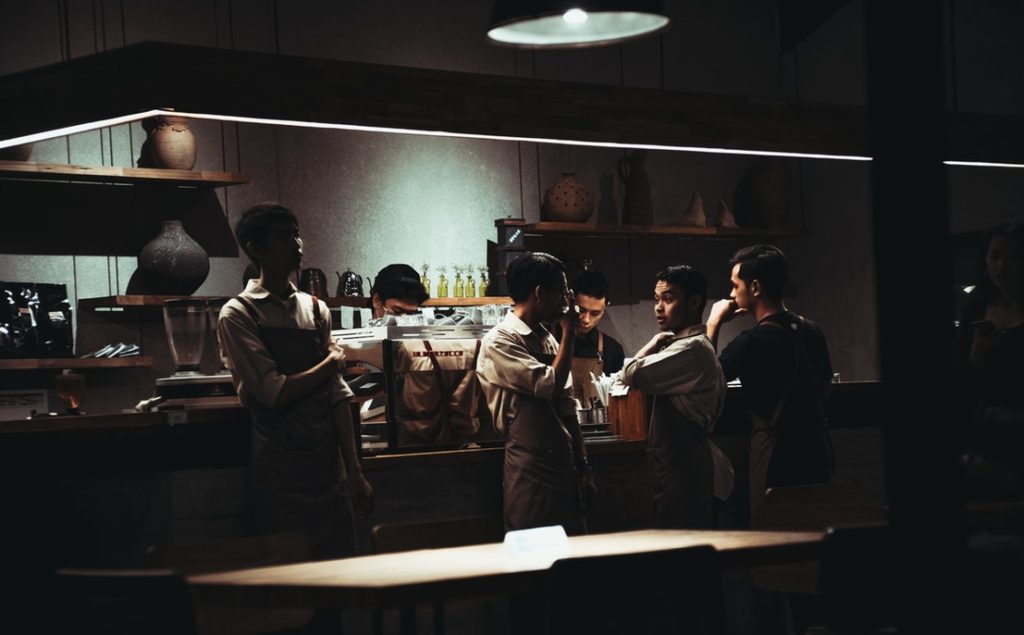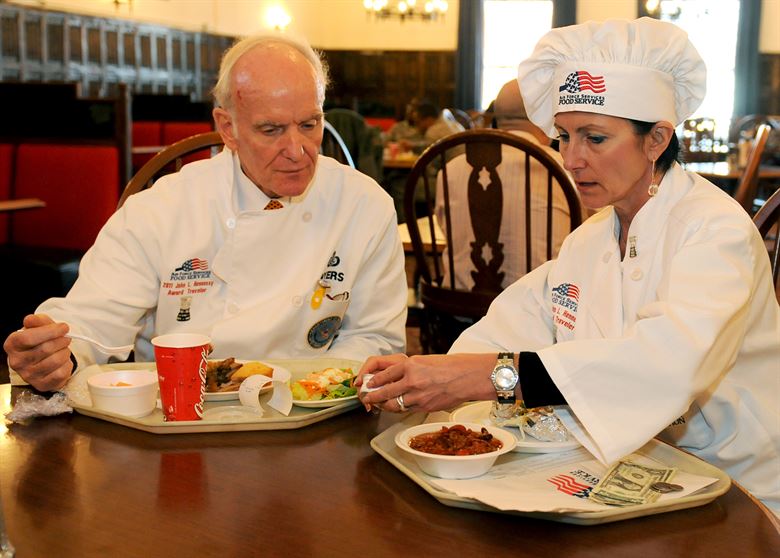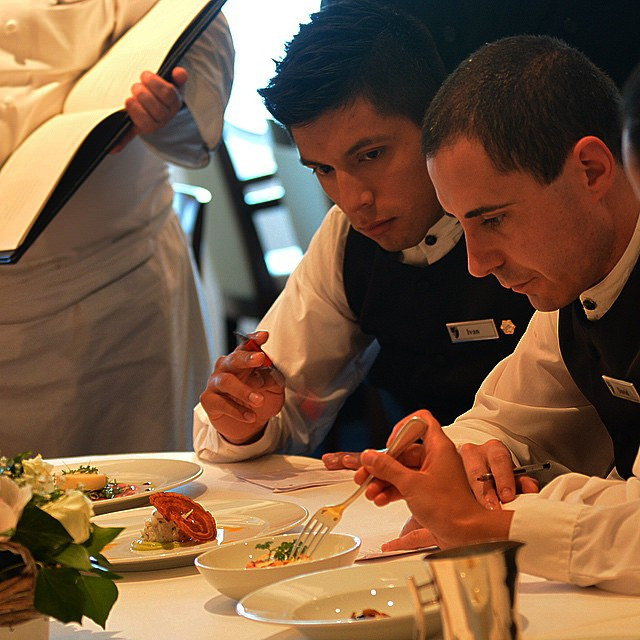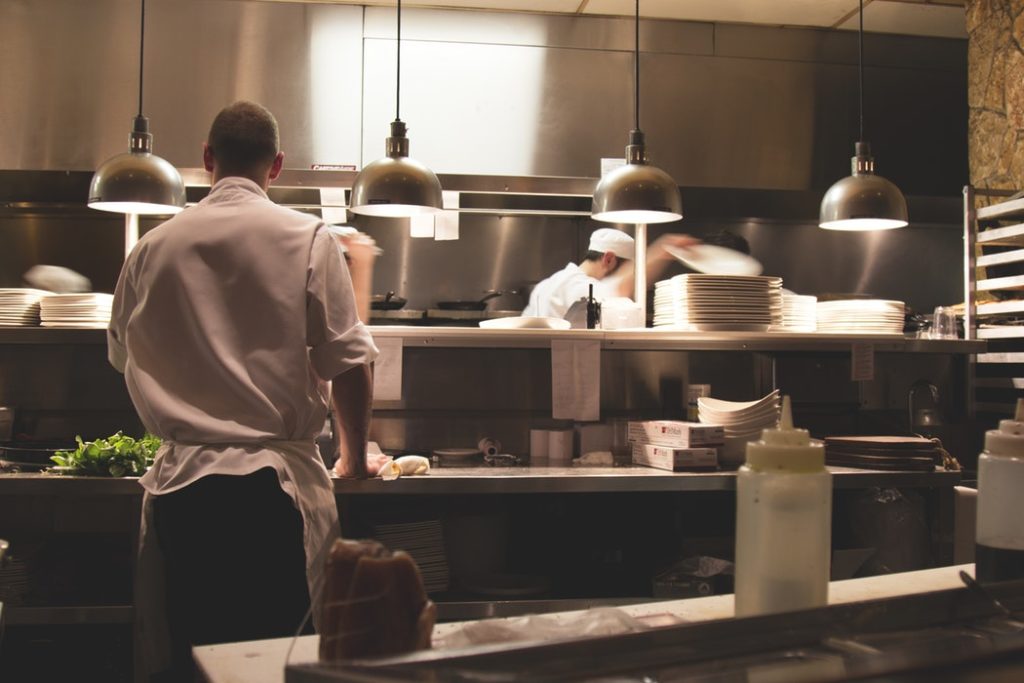A great partnership is timeless: Lennon and McCartney, Marge and Homer, Sherlock Holmes and Dr. Watson, Mulder and Scully, Bert and Ernie – the list goes on!
Comparatively, the most important partnership or collaboration a restaurant owner needs is the relationship between the back-of-house (chef and their brigade) and their front-of-house.
Therefore, the big question is:
How can you create a seamless and professional service when the pressure is on to deliver exquisite food when the restaurant is at full capacity?
Or:
How can your front-of-house and your back-of-house work in perfect sync?
Here are some ideas how.
1. A collaborative approach

For your restaurant to flourish, it is essential that both front-of-house (FOH) and the back-of-house (BOH) are working together as a professional team to create a positive and enjoyable environment for customers to dine in.
Clear and concise communication is key.
If either FOH or BOH are not effectively communicating, then mistakes will happen, orders will be incorrect, and this could create a domino effect, ultimately leading to unhappy customers who may insist on discounts, a full refund or could even result in poor reviews which will affect business significantly.
2. A meeting a day

Try to ensure that both the FOH and BOH teams meet once a day to discuss all tasks and action points.
Treating them as one team will eradicate any ‘us vs them’ perceptions and will ensure that all team members are fully briefed on the days’ work ahead.
These daily meetings will also provide a regular opportunity to discuss any potential issues whilst providing an appropriate platform to exchange views, identify problems and to raise ideas.
‘Restaurant Manager of the Year 2010’ winner David Hennigan says that, “the more both teams talk the more they stop acting as a member of one team and start interacting as human beings. It’s about getting them to understand that they are both there to look after the guest”
Use these daily meetings to review any additions to the menu as well. Ensure that your front of house staff is fully familiar with all dishes on the menu.
That way, they can answer questions from customers on the fly and don’t have to keep running back and forth to the kitchen to interrupt the chef.
3. Taste, taste, taste!

Why not consider running taster sessions where the FOH staff have an opportunity to taste items off the menu?
The more familiar that they are with the dishes, the better. Not only will this allow them to address customers questions and concerns, it will also increase their enthusiasm and will help them feel a part of the team.
Each server should be fully au fait with the dishes to answer those tricky questions on how each dish is prepared, where the ingredients were sourced, and to deal with any potential allergy issues.
Gillian Lithgow (HR Manager at Marcus Wareing) suggests that restaurant owners can encourage a ‘role reversal’ where “chefs do wine tasting and the front-of-house staff come and do food tasting”
A busy service when maximum covers are being expedited can cause delays in the kitchen.
FOH team members must communicate any potential delays to tables as well as advising the kitchen if any large parties have turned up, plus advising the BOH about any customers who might be in a rush.
4. Dealing with pressure

A busy service can be a particularly fraught time in a kitchen.
The FOH team needs to understand the pressure that the chef and their brigade are under. Similarly, the BOH brigade also need to appreciate the pressures that the FOH team may be under too.
Try and eliminate any instances of ‘blame culture’ as this is not helpful and is detrimental to team spirit and productivity.
Encourage as much collaboration as possible between FOH and BOH. You could partner up a member from each team to develop a new dish to be considered for the menu.
This will provide both parties a unique opportunity to work together and create something new and exciting which will boost their confidence and will ensure a collaborative partnership.
Alasdair Elwick, General Manager at the Samling Hotel says that “respect is the answer.”
“If the kitchen sees that the front of house is passionate about what they are doing, they will trust them to take control of the food once it leaves the kitchen door. It also leads from the top: if a head chef and restaurant manager get on well, that will filter down; if they argue, their teams are likely to do the same.”
5. Look to reward staff

Consider a reward scheme for your FOH staff. This doesn’t necessarily have to be money orientated, but members of the team who do well can be awarded a prize (such as cinema tickets or a voucher for their favourite shop or similar)
Use restaurant comments cards, social media reviews to leverage customer feedback. If your Front of House team know that there is an additional incentive involved, this will ensure that they go all out to deliver the very best in class service.
6. And the nominations are….

Why not encourage FOH team members to apply for hospitality accolades?
From ‘Young Waiter’ awards to ‘Kitchen Porter of the Month’ to ‘Best Sommelier’, there are several awards that your FOH team can apply for.
Alternatively, you can also nominate team members for these different awards. Not only will this boost their confidence, it will also improve overall positivity as well as creating some excellent PR for your restaurant.
See your staff as more than just a ‘host’, a ‘bartender’ or ‘server’ – remembering names and little facts about everyone goes a long way and demonstrates that you care.
Provide clear and concise guidelines to your FOH staff about how to approach and resolve problems with customers.
Not only will this provide your customers with a professional service, but it will ensure that your team members don’t panic when dealing with angry customers.
Ensure that any restaurant guidelines are communicated to the kitchen as well, so that they know what necessary steps that they need to take to assist the FOH team with dealing with any complaints.
7. Getting the right team on board

Recruiting the right people for the job is essential.
Look for candidates who are enthusiastic, positive, willing to learn and work hard. It is vital to have team members who are passionate about delivering an exceptional level of service and that has the customer at the forefront of their mind.
Keep your team members skills as up-to-date as possible, whether this is having regular performance reviews or sending them on training courses.
Not only will this help the productivity of the restaurant’s FOH, but it will also ensure that your team members feel invested and that they are a valued member of the team.
8. Encourage your staff to engage with customers

In a recent Gallup survey, it reported that when customers eat out, they are actively looking for an experience that leaves them feeling good. It also showed that customers are more likely to spend more money and visit a specific restaurant more often when they feel engaged.
Encourage your staff to develop rapport with customers (whilst not being too intrusive of course). This will help garner strong relationships with your customers which will in turn result in repeat business.
Start off by scheduling some dates in the diary for regular reviews along with those new daily meetings.
Order some comments cards (if you don’t have these already) and look to identify some winning pairings between FOH and BOH.
One of the key things to note is that your FOH team members will look to you – the owner for guidance, ideas and motivation – make sure that you make yourself available for this and that you ultimately lead from the front and your FOH team will follow.



